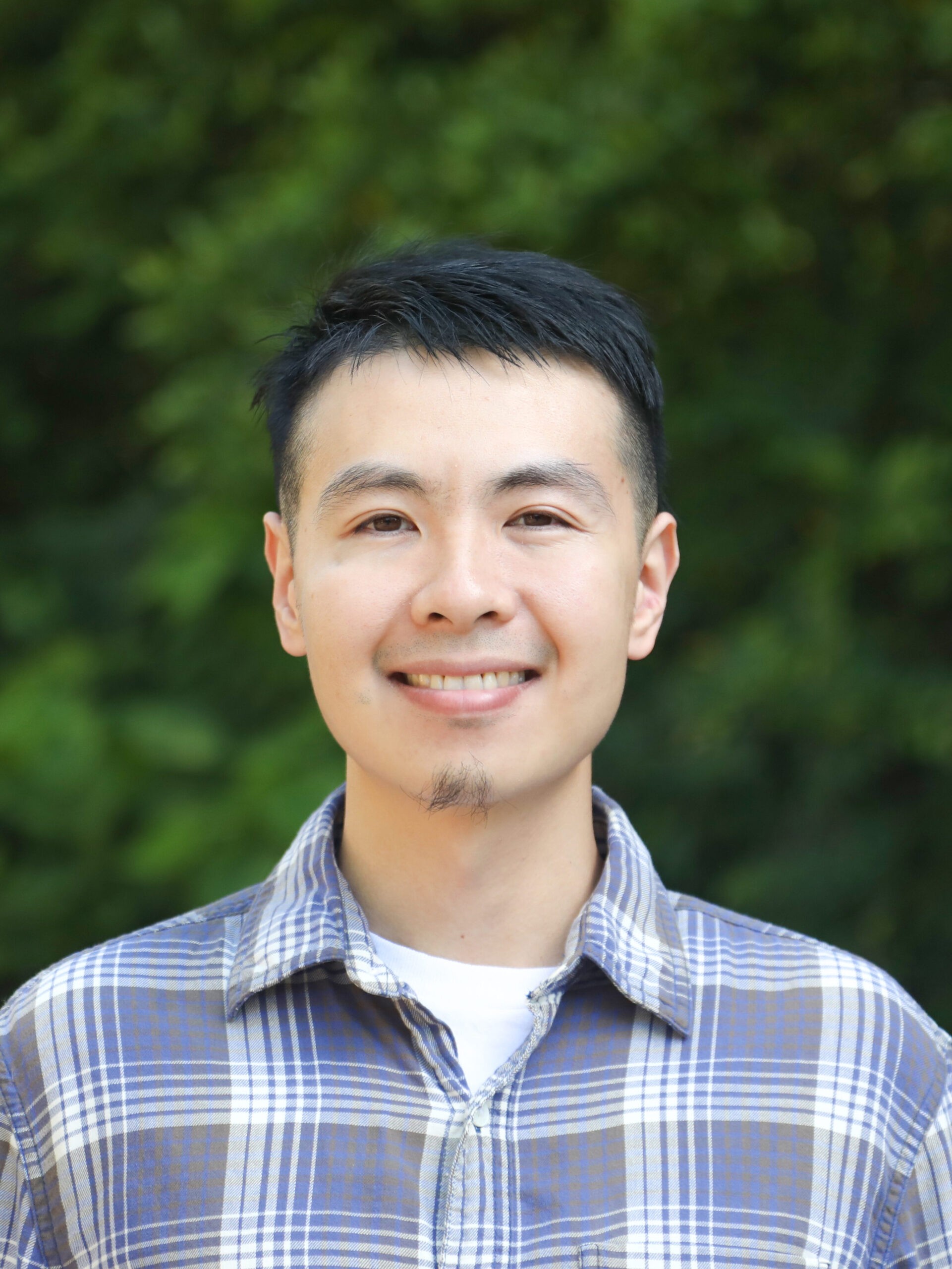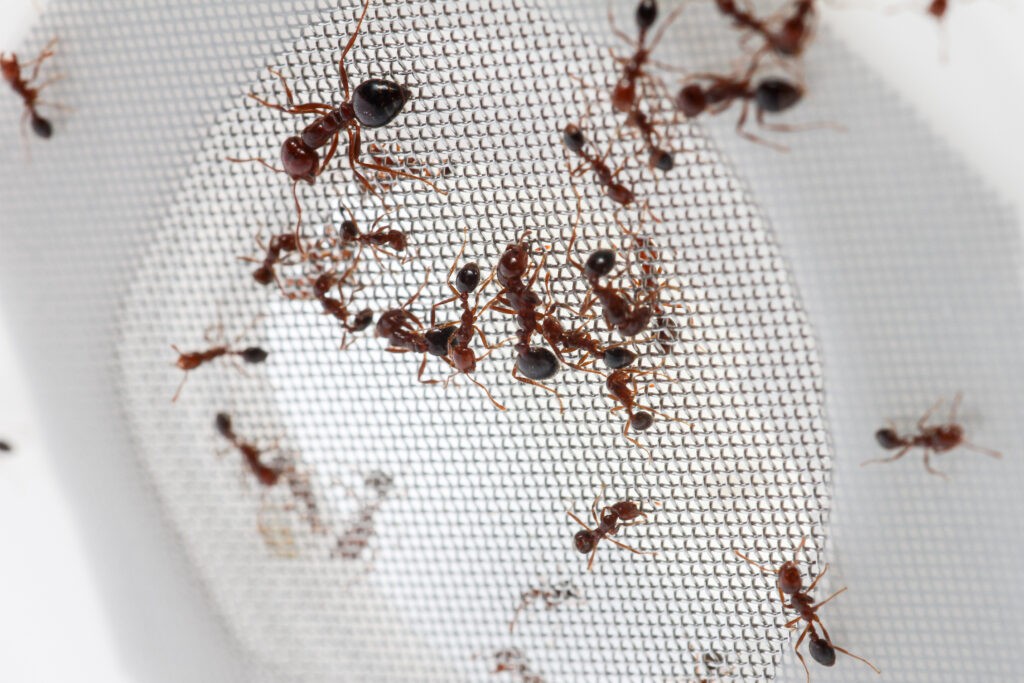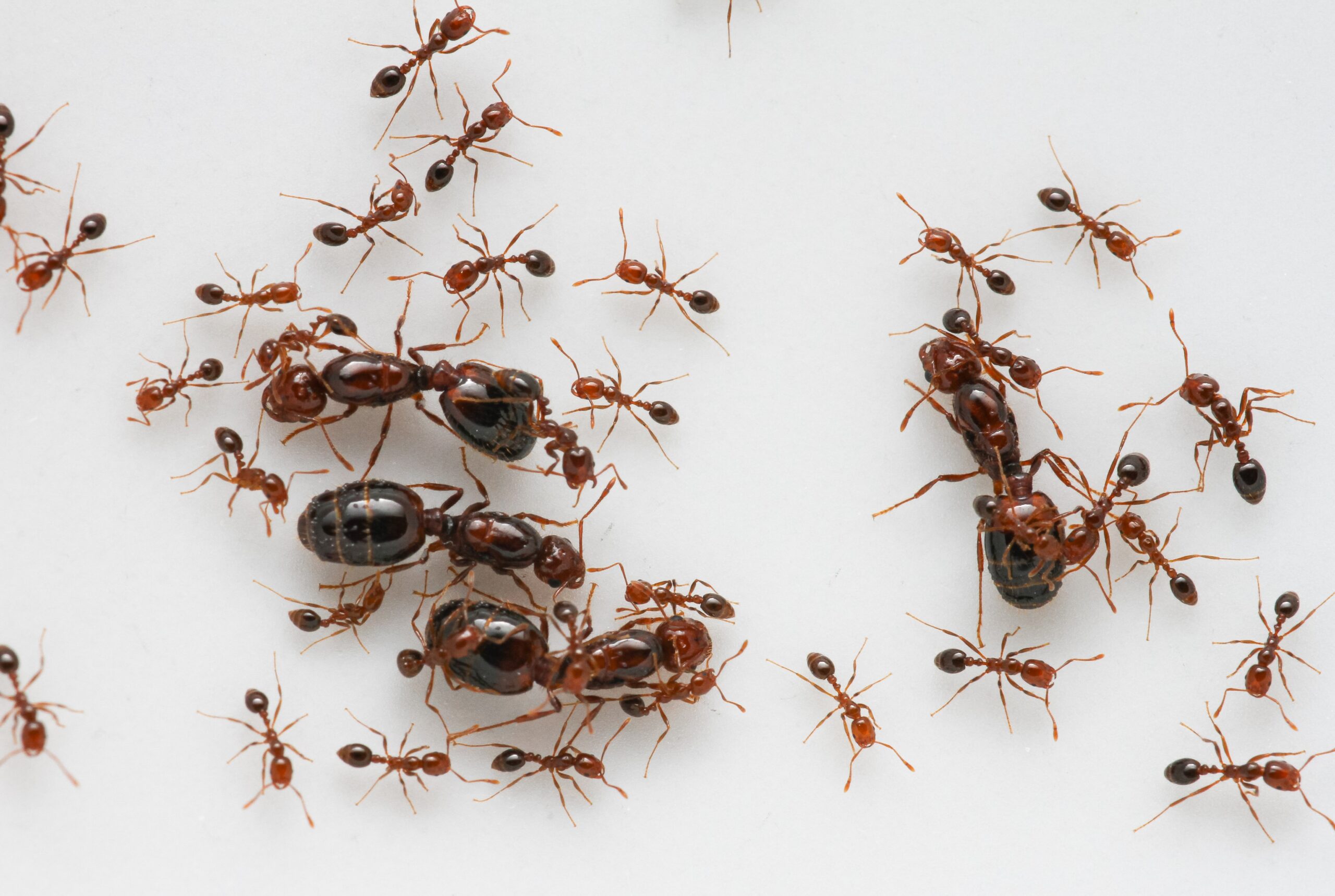Groups of social animals, including humans, can make complex decisions without a single central leader. Those choices aren’t always made by the majority, however.
In fact, a relatively small number of individuals in a group can sway a much larger group to change one of their fundamental ways of life – at least in ants.
This phenomenon – known as “minority influence” – is the central idea in a paper published this week in the Proceedings of the National Academy of Sciences (PNAS). The lead author is Haolin Zeng, a postdoctoral researcher at the University of Georgia Odum School of Ecology who completed his PhD at the UGA College of Agricultural and Environmental Sciences in 2022.

Fire ant colonies typically are built around either a single queen or multiple queens. Single-queen colonies will not accept additional queens, and workers will execute any potential competitor to their one queen. Ants that form multiple-queen colonies have a genetic variant from their single-queen counterparts, previous research found, and will nurture multiple queens at one time.
A small group of workers carrying this genetic variant for multiple-queen colonies, however, can influence single-queen ants to accept additional queens that also carry this genetic variant, shifting a colony from a single-queen to a multiple-queen social structure.
“When a certain portion of the workers carry this gene, somehow the colony switches to behave as a multiple-queen colony. The workers will happily accept any additional queen, but only ones that carry this genetic element,” said Zeng. The tipping point is relatively low; as few as 10% of the population can sway the others.
In order to let this minority influence play out, researchers had to introduce the ants to one another carefully. Suddenly mixing the two types of ants would cause “lethal combat,” according to the researchers, so they introduced three hundred single-queen ants and 100 multiple-queen ants to each other through a fine mesh for one day to acclimate them.
Once the ants could interact, researchers watched for more than 100 hours, searching for how they influence each other.
Zeng wanted to rule out any visible communication signals that the multiple-queen ants might send to nestmates. By introducing dead multiple-queen ants that had been washed to remove any pheromones and dead multiple-queen ants who hadn’t been washed, researchers could see that a pheromone impacts behavior. Even when this pheromone was introduced to the colony on glass beads, the ants responded.
These experiments showed that chemical communication between workers of different genotypes is crucial in this social conversion.

This type of indirect genetic effect – when the genes of one animal can influence the behavior of other animals – appears in nearly all animals, the authors point out.
“The idea that behavior is impacted not only by your own genes, but by the genes of nestmates or the folks you interact with is important,” Zeng said. “We talk about direct genetic influence and environmental influence, but animals’ behavior also is influenced indirectly by the genes of animals surrounding them.”
Zeng completed a bachelor’s degree in crop sciences and integrative biology from the University of Illinois Urbana-Champaign before turning his attention to insects and joining the entomology department at UGA in 2016. As a postdoc, he continues to conduct fire ant research as part of the Odum School.
“When I started to study insects, I asked, what are the most interesting system insects to study, ecologically and evolutionarily? That’s got to be the social insects. They are everywhere and super successful. There are so many questions to ask and behaviors yet to understand,” he said. Co-authors on the paper “Conversion of social organization in fire ants induced by few colony members: unmasking indirect genetic effects” are Kenneth G. Ross of the UGA CAES Department of Entomology and Takao Sasaki in the Department of Brain and Cognitive Sciences at the University of Rochester, formerly of the UGA Odum School of Ecology.

